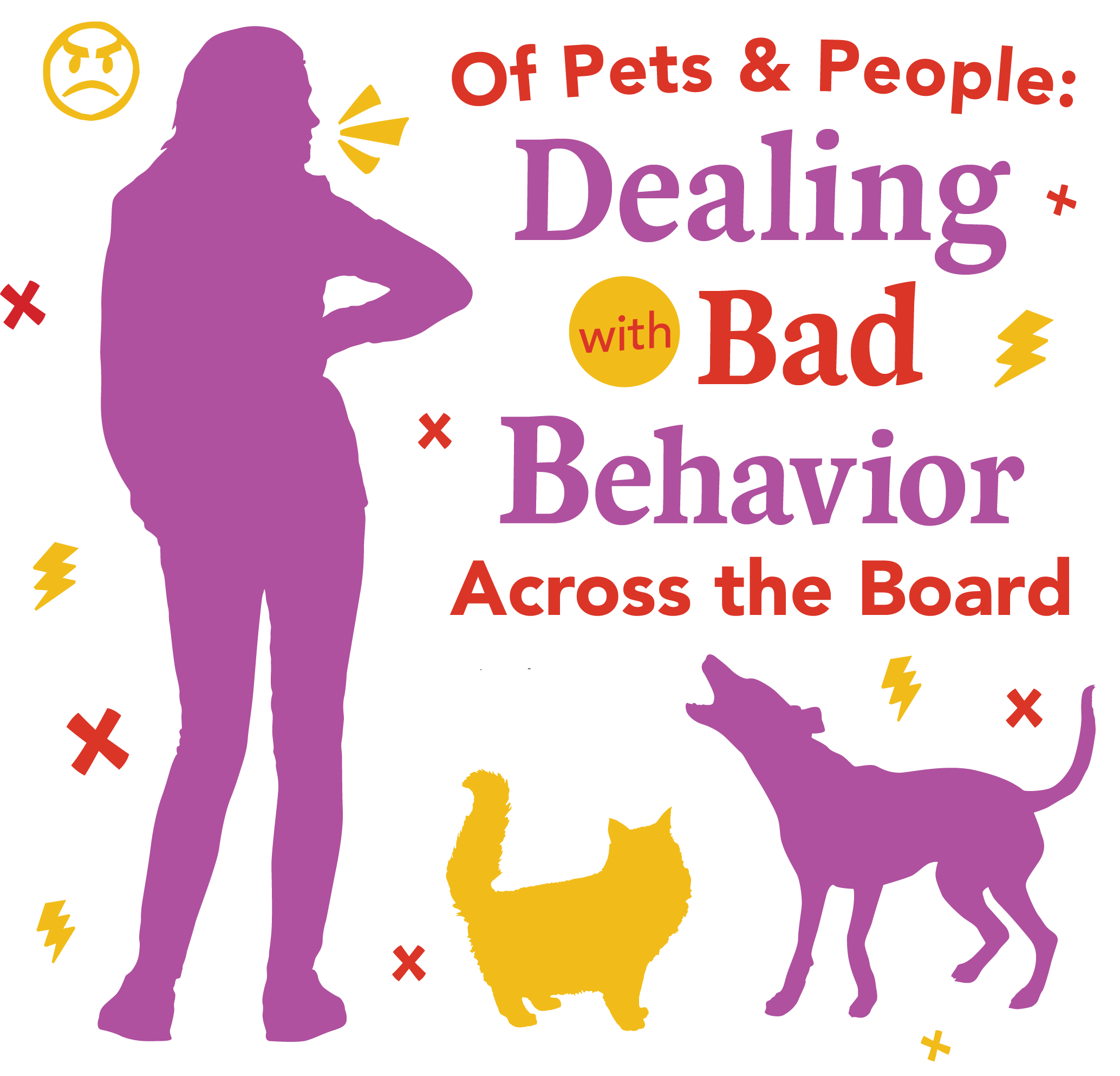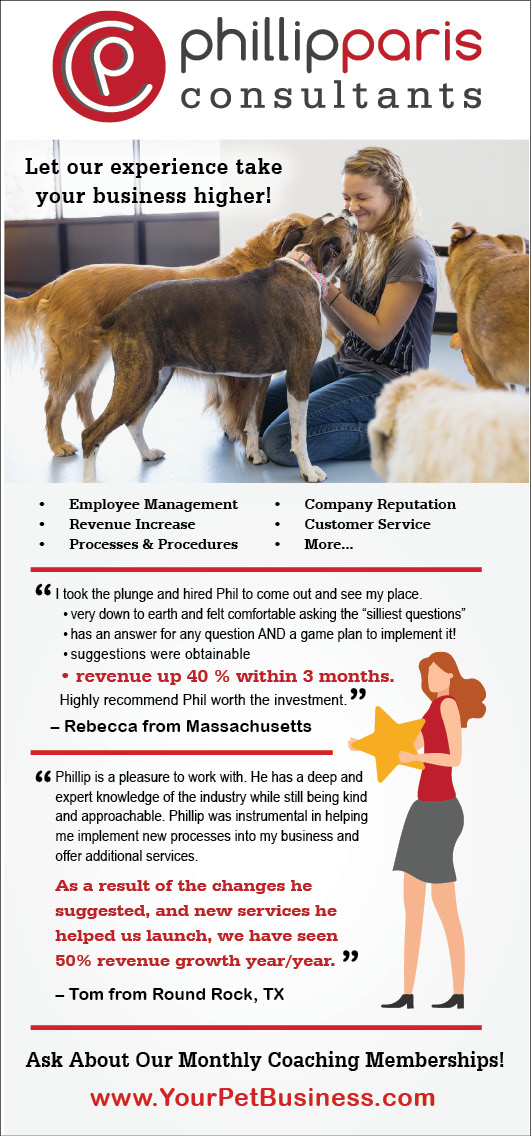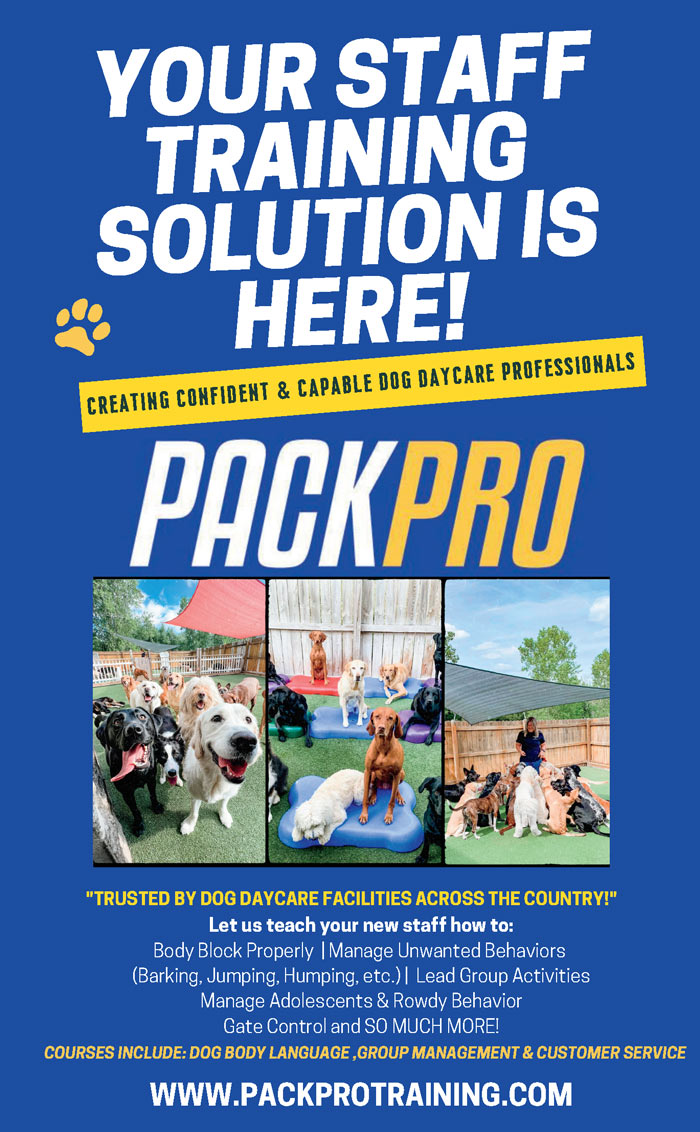
By Louise Dunn
 cat, a Chihuahua and a Beagle walk into a boarding facility. Yes, this sounds like the beginning of a joke…but it is not. One pet tries to bite everyone who touches it, one will not stop barking, and the other freaks out and hides under the chair (clawing at any arm or leg that comes within reach). These are behavior issues team members face daily, and these behaviors often result in a range of reactions from the pet owner. Reactions include ignoring the behavior as it worsens, wanting to medicate the pet, relinquishing it to an animal shelter or even euthanizing the pet.
cat, a Chihuahua and a Beagle walk into a boarding facility. Yes, this sounds like the beginning of a joke…but it is not. One pet tries to bite everyone who touches it, one will not stop barking, and the other freaks out and hides under the chair (clawing at any arm or leg that comes within reach). These are behavior issues team members face daily, and these behaviors often result in a range of reactions from the pet owner. Reactions include ignoring the behavior as it worsens, wanting to medicate the pet, relinquishing it to an animal shelter or even euthanizing the pet.
How does your team respond to these situations? Of course, pet professionals aim to relieve the pressure in any problem situation—they will even dive into the middle of a dog fight! So what is the best way to deal with the biting, the barking and the scratching? Perhaps the starting point should be what NOT to do. Do not grab or hit the pet, don’t yell at the pet or “feed” it with attention, nor should you ignore the behavior. While these may be seen as a short-term solution, some could even escalate the bad behavior into something worse.
For the team, using techniques taught in programs such as Fear Free® or Low-Stress Handling® can help. Techniques to alleviate fear, anxiety and stress in pets are critical for delivering care or professional services, keeping the team safe (from reducing injuries to promoting a more enjoyable work environment) and partnering with the client in caring for the pet. To make sure these techniques are being utilized, assign a behavior care coordinator to oversee pet behavior improvement plans, which should include providing new ideas and tips to the team, keeping appropriate treats and tools on hand, and providing pet owners with updates and educational materials.
For the client, the team can provide specific tools and resources for use at home. Some clients will need the additional support of training sessions, tactics to continue at home and environmental or routine adjustments. In order to help the client, the pet professional team must be able to show the pet owner that they can try to manage the behavior problem with proper support.
However, this brings up another issue: the bad behavior of the people on the team. It may be a running joke that people work in the pet profession to avoid dealing with other people, but if the team will jump into the middle of a dog fight or take extra classes on how to improve pet behavior, why do they have so much trouble dealing with each other’s bad behavior?

The advice for treating bad human behavior is similar to that for treating bad pet behavior; do not grab or hit the co-worker, don’t yell at the co-worker, don’t “feed” them with attention or ignore the behavior. Again, these reactions may be perceived as a short-term solution, but will likely escalate the bad behavior into something worse. Notice that your team is already well on its way to handling bad human behavior with some of the tools they already use for bad pet behavior!
Bullying can originate from competition at work, jealousy, anger or personal history. The typical actions of a bully are varied, from tormenting and teasing, intentionally ignoring a person or gossiping about the person, tattling or pointing fingers, sabotaging or interfering with work to yelling or swearing at the person. Unfortunately, the reality is that over 35% of adults experience workplace bullying and another 15% witness it happening.1
Addressing this bad behavior is necessary. Experts recommend not reacting with strong emotions to the bully. Instead, calmly use an assertive tone to point out their behavior, report the behavior to a supervisor, document all incidents (date, time, witnesses, etc.) and plan other options if the business does not take action against the bully.2
If pet professionals do not stop bullying co-workers, are they hypocrites for saying they are capable of delivering compassionate care to pets?


We owe our co-workers respect that will translate into an enjoyable work environment that ultimately leads to a cohesive team—exactly what the pets deserve. Go a step further and encourage positive gossip and create a culture of pride in the efforts of the talented, compassionate pet professional team.
It is best to tackle the issue of bad behavior from the very moment a person is hired. Any new team member should receive written policies and procedures when they begin their training so they are familiar with the business’s culture, core values and job expectations. Additionally, clearly written and distributed policies that prohibit bullying and harassment (including options for reporting complaints and potential disciplinary action for perpetrators) should be part of new-hire training and reviewed annually. This allows management to hold every team member accountable fairly and consistently. Any delay or failure to investigate or discipline could be perceived as management’s “acceptance” of bad behavior in the workplace. Monitor your culture and immediately respond to a “dog fight” involving bullying, gossiping or harassing activities.
There will always be situations where the behavior of others (animal or human) will be challenging. So why not be proactive and give the team the tools and resources they need to accept the challenge and win?
Create a workplace environment where Samantha, Brad and Cheryl enjoy working with each other and the rest of the team. Prepare the team with tips and techniques to reduce fear, anxiety and stress so that when a cat, a Chihuahua and a Beagle walk into the business, the team is ready to make it a good experience for the pets.
It’s no joke that knowing how to handle challenging behavior issues can make a world of difference, for man and beast.
References:
- Swaity, S. (2018, Jan 9). Bullied at Work. Tough Nickel. https://toughnickel.com/business/When-You-Are-Bullied-At-Work
- Russell, J. (2016, April 3). How to Recognize and Deal with Bullying at Work. Los Angeles Times. http://www.latimes.com/business/la-fi-0403-career-coach-bullies-20160402-story.html
- Dodgson, L. (2017, March 22). 4 Ways to Deal with a Coworker Who’s Spreading Gossip about You. Business Insider. http://www.businessinsider.com/how-to-deal-with-gossip-at-work-2017-3
Louise Dunn is a renowned award-winning speaker, writer and consultant. She brings over 40 years of in-the-trenches experience and her business education to veterinary management. Louise is founder and CEO of Snowgoose Veterinary Management Consulting. SVMC works with veterinarians who want to develop a strategic plan that consistently produces results. Most recently Louise received many awards including the WVC Educator of the Year numerous times and VetPartner’s The Life Time achievement Award in January 2016.



